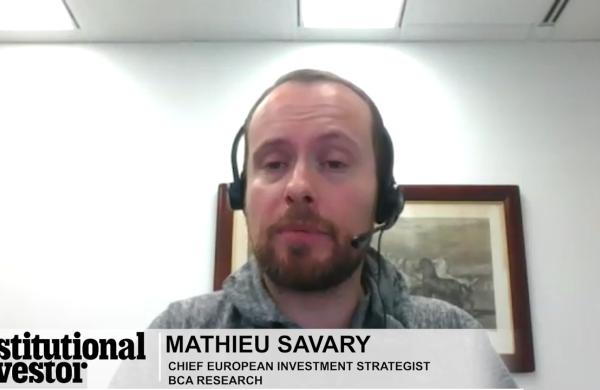Investors seemed to love everything Latin last year. The MSCI Latin America index surged 27.6 percent, compared with a 13.2 percent rise for emerging markets overall and a gain of 9.5 percent for the MSCI world index. In Brazil, trading volume on the Bovespa index grew by nearly half and market capitalization increased by almost 50 percent, to roughly $341 billion. Latin American mutual funds saw their assets rise by one fifth. More than a dozen Latin companies went public.The good cheer was widespread. Argentina, Brazil, Chile and Venezuela all had solid increases; Mexico's was dramatic, at roughly 44 percent; Colombia's was spectacular, at 91 percent. The stellar gains were fueled by low interest rates, a pickup in the global economy, a perception that political risk has moderated and, above all, soaring commodities prices. "Twenty-seven percent of the MSCI Latin America index is materials stocks," notes Geoffrey Dennis, Latin American equity strategist and research director for Smith Barney Citigroup in New York. "If you add energy, that number grows to 40 percent."
Latin America's investment renaissance makes first-rate research on the region all the more prized. For a third straight year, investors deem UBS to be the single best source of Latin insights: The Swiss firm takes top honors in Institutional Investor's 2005 Latin America Research Team. As it did last year, UBS garners 15 team positions. Bear, Stearns & Co. and Santander Investment Securities tie for second, with 12 slots apiece. Tying for fourth are Credit Suisse First Boston, Deutsche Bank Securities and Merrill Lynch, with nine positions each. The German bank moves up the most of any firm; last year it came in eighth, with just two slots. Its leap is evidence of a continuing commitment to Deutsche Ixe, a joint venture with Mexico Citybased Ixe Casa de Bolsa begun in 2002 to provide Latin American research. To choose team members, II surveyed more than 290 individuals at almost 160 institutions managing an estimated $75 billion in Latin American equities.
A couple of distinct trends were operating in Latin American research in 2004. One was the growing influence of globalization. As Damian Fraser, UBS's Latin American research director, explains, "Because country risk is falling and [Latin American] countries are more normal, their stocks trade more like their global sectors than like their countries." Thus, he says, Co. Vale do Rio Doce, or CVRD, the world's leading iron-ore miner, "trades with the Big Five mining companies in the world, not with Brazil." That global, not local, factors primarily drive such companies' earnings "is a positive development for global investors," says Fraser, who also leads the No. 1 team in Mexico coverage.
The other noteworthy development is a renewed commitment to Latin American research by brokerage firms that tended to give short shrift to the region during the bear market years. "Coming off the back of two good years has put money in the brokers' pockets," notes Matthew Hickman, a portfolio manager at Credit Suisse Asset Management in New York. "That has led to further investment in analytical capacity." Almost 27 percent of the Latin America Research Team respondents who answered the relevant question were "very satisfied" with sell-side Latin equities research, compared with 16 percent in 2004.
Not all brokerages neglected their Latin coverage in the bad years. "Bear Stearns does a good job because they never juniorized the team," says Luis Carrillo, a portfolio manager at J.P. Morgan Asset Management in New York, who believes experience pays off. He cites veteran Bear Stearns analyst Marc McCarthy (leader of the top-ranked teams in both Conglomerates and Oil, Gas & Petrochemicals) for an early bullish call on Brazilian oil company Petróleo Brasileiro, or Petrobras. McCarthy, 34, had seen details of drilling platforms coming on line that would ramp up production. At the time of McCarthy's July 2004 upgrade, Petrobras shares were trading at $27.76; they surged past $50 in late February before falling back through mid-May.
For the many firms that have been augmenting their regional coverage over recent months, however, the debate over how best to deploy analysts covering Latin companies has intensified. "Investors are increasingly willing to pay for local flavor in research, but the days of people everywhere and huge budgets are over," asserts Citi's Dennis. Like Citi, which has six sector analysts and a strategist in New York plus five analysts in Mexico City, CSFB operates under the "New York base with local flavor" format.
UBS and Santander prefer to embed the bulk of their Latin American researchers in the countries themselves. UBS Latin research director Fraser makes his headquarters in Mexico City and manages a team of seven analysts in Brazil, five in New York, three in Mexico and two in London, in addition to two economists in New York. The Deutsche Bank arrangement is similar. The Deutsche Ixe and Deutsche Bank research teams consist of six sector analysts in New York and three each in Mexico and Brazil, plus strategists in Mexico and New York and economists in Colombia, London, New York and Mexico. Bear Stearns opts for a third approach: It home-bases all its Latin American analysts in New York but makes sure they pile up plenty of frequent-flier miles visiting the companies on their Latin beats.
The globalization of Latin research will increasingly influence location decisions. As Latin American companies follow the European stock-analysis paradigm and delink from their home countries, emphasis and resources cannot help but shift from Latin American country analysts to global sector analysts. Moreover, as cross-border acquisitions become commonplace, following multinational companies from their native countries becomes less and less meaningful. Consider Mexican cement maker Cemex's recent acquisition of the U.K.'s RMC Group. Because only 30 percent of Cemex's earnings now emanate from Mexico, UBS follows the company from London. CSAM portfolio manager Hickman reasons that global industries, particularly commodities, are well suited to coverage from a major financial center while local industries are best followed in-country. Santander, which maintains analysts in Argentina, Brazil, Chile, Colombia, Mexico, Peru and Venezuela can cover many local companies, he observes, while Morgan Stanley and J.P. Morgan can make up for their smaller local teams by offering greater depth of coverage.
"We use, like and need both kinds of research," Hickman says. Most valuable of all to him is primary research. He points to Citigroup's Mexican cement-price survey as a prime example: "It helps us to get ahead of industry trends and changes." JPMAM's Carrillo agrees on the need for a special kind of research bifocals in looking at Latin American companies. "You can get blindness from being too local or too global," he says. "You need to have both."
In any case, concludes Princeton, New Jerseybased William Landers, a Merrill Lynch Investment Managers portfolio manager, "the quality of the analyst is more important than where he or she is based." He points to Bear Stearns' New Yorkbased Daniel Altman, the leader of the No. 1 Metals & Mining team, who predicted last fall that the price of iron ore would soon soar because of heavy global demand, especially from China.
Riding his July 2003 upgrade of CVRD to outperform, Altman raised his price target from $22.67 to $28 on September 9, 2004, when the company's American depositary receipts were at $19.76 (prices reflect a 3-for-1 ADR split in September 2004). "Altman stuck his neck out farthest, and people gave him a lot of grief," recalls Landers. Nonetheless, in February, CVRD pushed through a 70 percent-plus hike in the price of iron ore. The Brazilian company's shares rose 52.6 percent in 2004, most of that in the final quarter of the year. (The ADRs peaked at slightly higher than $30 in March and fell to about $25 by mid-May.)
Other buy-siders praise Cement & Construction first-team leader Gordon Lee's timely downgrades of Mexican homebuilders Consorcio ARA at $43.59 and Urbi Desarrollos Urbanos at $64.75, in early February 2005. The UBS analyst downgraded based on valuation, as the stocks had run up 30 percent and 33 percent, respectively, since the beginning of the year. By mid-May the shares had fallen to $33.20 and $55.40, respectively.
Future bulletins from Latin America may be downbeat as well. UBS's Fraser anticipates that 2005 "will be more difficult," though he doesn't foresee a big correction. "The external environment is less supportive -- U.S. interest rates are rising, and the commodity cycle has peaked -- and valuations have gone up," he says. His prediction: As a group, Latin American stock markets will rise 5 to 10 percent through mid-2006. He sees Mexico as less risky than Brazil, as the former is more closely aligned with the U.S. market while Brazil trades more like a commodity. Echoing that reasoning, Charles Robertson, head of the emerging-markets economics group at ING Financial Markets in London, says, "Mexico is looking pretty good now to European investors because its currency is linked closely to the U.S. dollar."
With Latin economies still strong, Citi's Dennis finds that many "classic sentiment indicators" point toward euphoria. To Dennis, that is a powerful contraindicator. He expects Latin American equities to fall 5 to 10 percent in 2005 as global interest rates creep up, currency turbulence increases and stock valuations become stretched. Plainly, though, whether the bears or the bulls prevail, the need for good Latin American research is greater than ever.
The ranking was compiled by II under the direction of Director of Research Operations Group Sathya Rajavelu, Assistant Managing Editor for Research Evan Cooper, Assistant Managing Editor for Technology and Development Lewis Knox and Senior Editor Jane B. Kenney, with Associate Editor Sivert Hagen and assistance from Associate Editor Daniel Gaviria.





